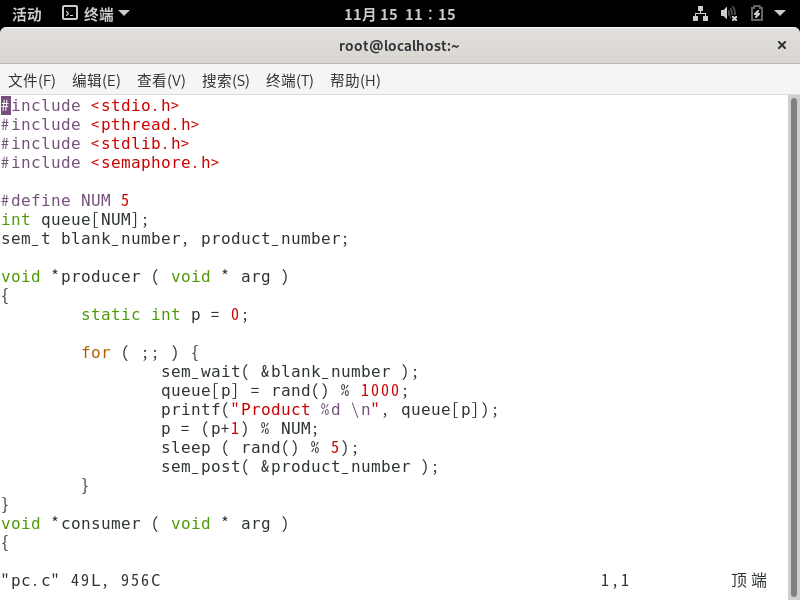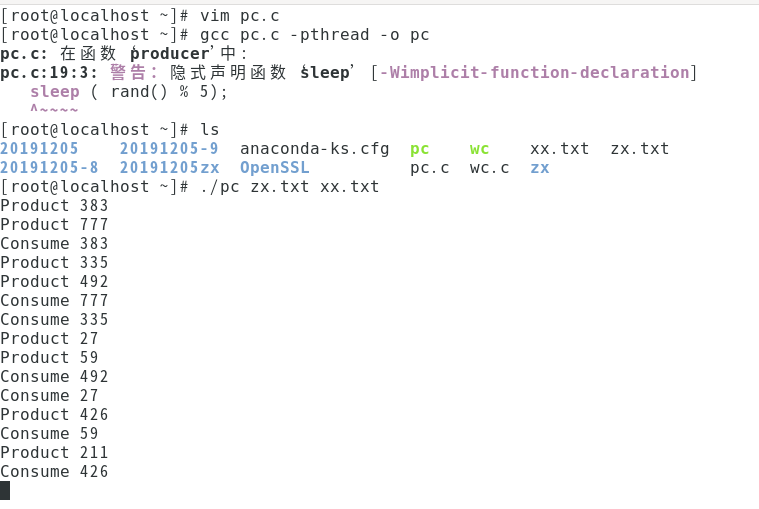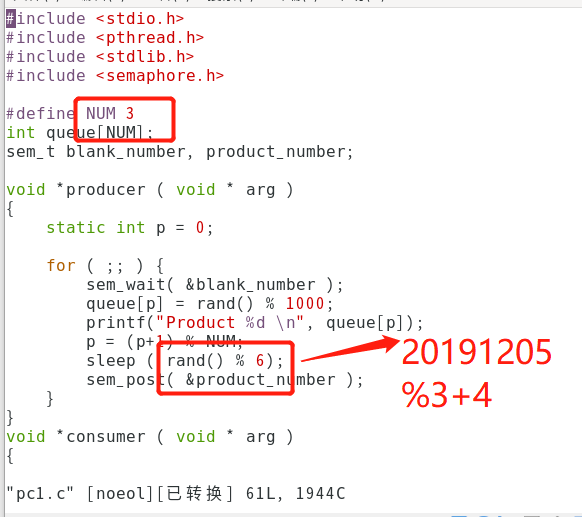thread同步测试
1 编译运行附件中的代码,提交运行结果截图,并说明程序功能
2 修改代码,把同步资源个数减少为3个,把使用资源的线程增加到 (你的学号%3 + 4)个,编译代码,提交修改后的代码和运行结果截图。
代码截图:

代码运行截图:

程序功能:生产者消费者模型,假定有两个线程,一个消费者线程,一个生产者线程。一个模拟生产者行为,一个模拟消费者行为。两个线程同时操作一个共享资源(一般称之为汇聚),生产向其中添加产品,消费者从中消费掉产品。
修改代码
代码如下:
#include <stdio.h> #include <pthread.h> #include <stdlib.h> #include <semaphore.h> #define NUM 3 int queue[NUM]; sem_t blank_number, product_number; void *producer ( void * arg ) { static int p = 0; for ( ;; ) { sem_wait( &blank_number ); queue[p] = rand() % 1000; printf("Product %d \n", queue[p]); p = (p+1) % NUM; sleep ( rand() % 6); sem_post( &product_number ); } } void *consumer ( void * arg ) { static int c = 0; for( ;; ) { sem_wait( &product_number ); printf("Consume %d\n", queue[c]); c = (c+1) % NUM; sleep( rand() % 5 ); sem_post( &blank_number ); } } int main(int argc, char *argv[] ) { pthread_t pid, cid,cid1,cid2,cid3,cid4,cid5; sem_init( &blank_number, 0, NUM ); sem_init( &product_number, 0, 0); pthread_create( &pid, NULL, producer, NULL); pthread_create( &cid, NULL, consumer, NULL); pthread_create( &cid, NULL, consumer, NULL);//创建消费者线程 pthread_create( &cid1, NULL, consumer, NULL);//创建消费者线程 pthread_create( &cid2, NULL, consumer, NULL);//创建消费者线程 pthread_create( &cid3, NULL, consumer, NULL);//创建消费者线程 pthread_create( &cid4, NULL, consumer, NULL);//创建消费者线程 pthread_create( &cid5, NULL, consumer, NULL); pthread_join( pid, NULL ); pthread_join( cid, NULL ); pthread_join( cid, NULL );//等待消费者线程执行完 pthread_join( cid1, NULL );//等待消费者线程执行完 pthread_join( cid2, NULL );//等待消费者线程执行完 pthread_join( cid3, NULL );//等待消费者线程执行完 pthread_join( cid4, NULL );//等待消费者线程执行完 pthread_join( cid5, NULL ); sem_destroy( &blank_number ); sem_destroy( &product_number ); return 0; }

编译运行截图:



